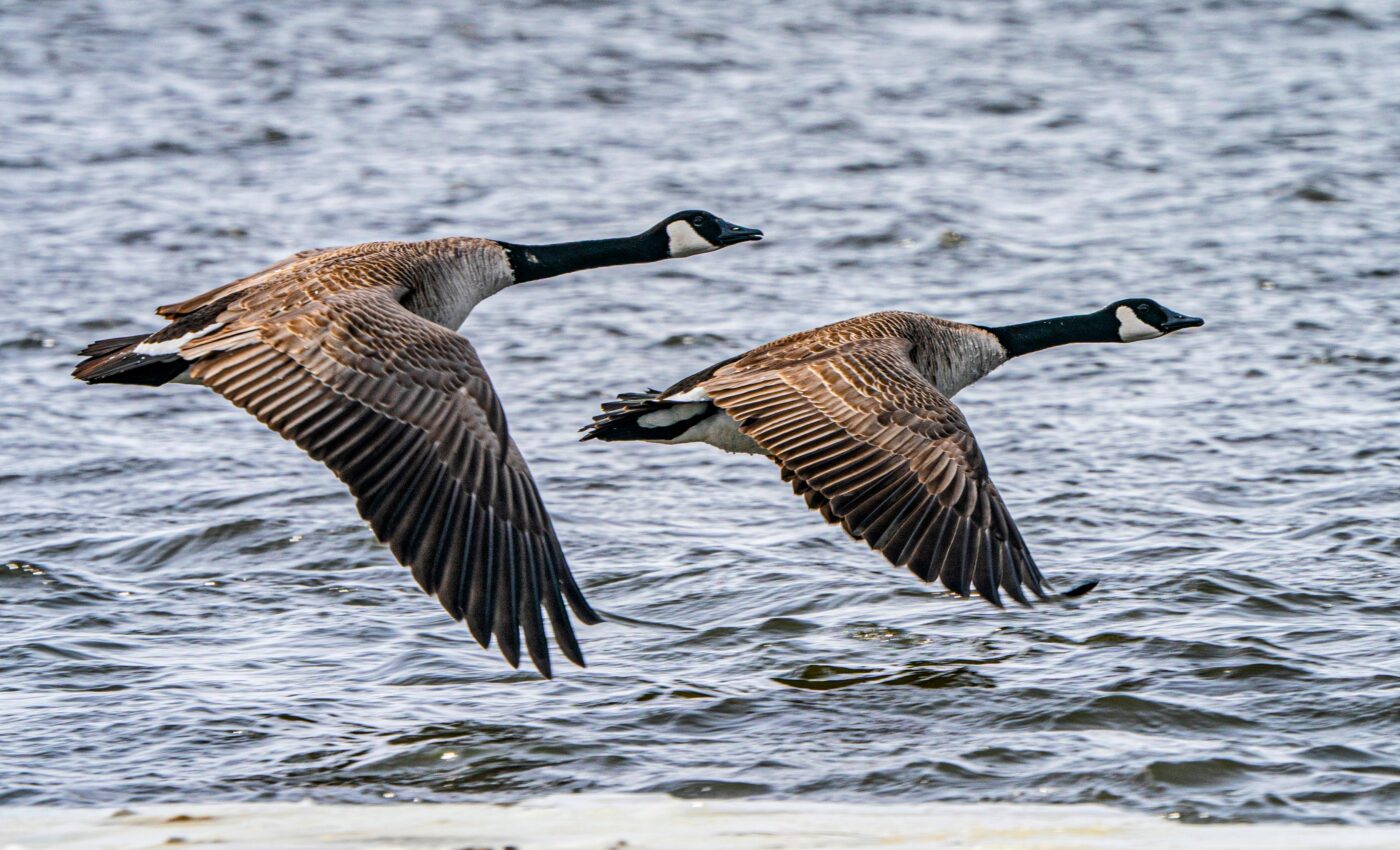
Canada geese keep calm and carry on after flock reduction
In a striking example of resilience and adaptation, Canada geese have demonstrated a unique response to significant disruptions in their social structures.
Recent research conducted by the University of Exeter has revealed that after a considerable reduction in their numbers due to population-management culling, Canada geese primarily strengthened their existing social bonds instead of forming numerous new connections.
Network connectivity
“Culling did not clearly increase the connectivity of the network or lead to the development of new associations among individuals in place of existing associations in our population of Canada geese,” wrote the study authors.
“While social groups were less distinct in the year following the cull (the subdivision of the annual network into communities having a lower modularity), the overall properties of the network stayed broadly similar between the 2 years of study.”
“Moreover, there was evidence for persistence rather than dissolution of prior associations, with survivors of the cull tending to compensate for lost associates by increasing the strength of their associations and having lower turnover of existing connections.”
Adapting to change
The study, led by Dr. Nick Royle from the Centre for Ecology and Conservation on Exeter’s Penryn Campus in Cornwall, closely observed flocks of Canada geese both before and after approximately 20% of their population was culled.
“Culling of wildlife is often a controversial topic, both in terms of its ethics and its efficacy,” wrote the researchers. “Culling for disease control can only be justified where evidence indicates that it is likely to make a positive contribution.”
Contrary to some animal species that increase “social connectivity” by mingling with many new individuals – a factor that can heighten the spread of infectious diseases – these geese exhibited a different behavior.
Inherent resilience
“Our findings shows that Canada geese are very robust to this level of social change,” said Dr. Royle. “They are socially conservative – they keep calm and carry on, responding to losses in the flock by strengthen existing ties rather than greatly expanding their social network.”
“This ability to deal with social disruption – this resilience – might contribute towards their success as an invasive species.”
Implications for disease transmission
Canada geese, known for competing with native species, can also be carriers of diseases such as avian flu, impacting both human and animal health.
Their culling, particularly in regions like the Cotswold Water Park where the study was conducted, is often employed as a strategy to mitigate disease transmission.
However, the typical response to population reduction in some species can inadvertently increase disease spread due to the formation of multiple new social connections.
By contrast, the observed behavior of the Canada geese in this study indicates a reduced potential for heightened disease transmission. After initial adjustments to their social network, these geese showed robustness to the effects of culling by predominantly fortifying existing relationships.
Study significance
The researchers emphasize the significance of understanding the social behaviors of different species when planning management interventions like culling.
The unique response of Canada geese to social disruptions offers valuable insights into how social dynamics can influence the outcomes of population control measures and disease transmission risks.
Canada geese
Canada Geese are large birds known for their distinctive black heads and necks, white cheeks, and underbodies ranging from tan to cream. They are native to North America and are particularly well-known for their V-shaped migratory flight formations.
Breeding
These geese breed in Canada and the northern United States in various habitats near water, such as lakes, rivers, ponds, and marshes.
Diet
Canada Geese are herbivores, primarily feeding on grasses, grains, and aquatic plants. They have adapted well to urban environments, often seen in city parks and other green spaces.
Family bonds
A unique aspect of Canada Geese is their strong mate and family bonds. They are monogamous, often staying with the same partner for life. Families stay together for the first year, and the young geese, or goslings, are led by both parents.
Migration
Their migration is a notable phenomenon. They travel thousands of miles to their wintering grounds in the southern United States and even into Mexico. These migrations are driven by the change in seasons and food availability.
Protection
In some regions, Canada Geese are considered a nuisance due to their abundance and the mess they can create in parks and other public areas. They are protected under the Migratory Bird Treaty Act, making it illegal to harm them or disturb their nests without a permit.
The study was funded by the University of Exeter and the Animal and Plant Health Agency.
The research is published in the Journal of Applied Ecology.
Like what you read? Subscribe to our newsletter for engaging articles, exclusive content, and the latest updates.
—-
Check us out on EarthSnap, a free app brought to you by Eric Ralls and Earth.com.













